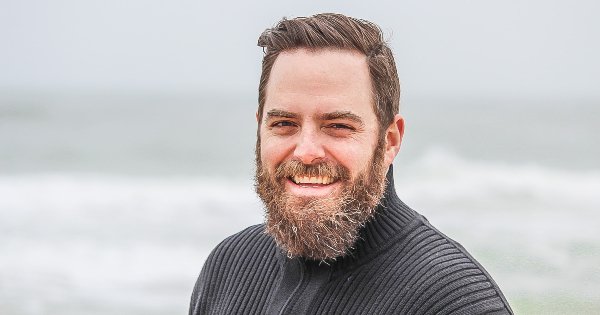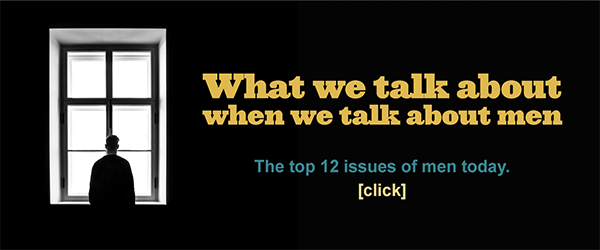
—
Like most folks, I have experienced mental and emotional pain and suffering. The pain got so bad some years back that I refused to leave my home until I figured out what the hell was wrong with me. I was days and days behind my door, trying to think my way back to emotional balance.
 During that self-imposed exile, I made use of some popular self-help books instructions on self-diagnosis and healing methods. Between reading chapters, I would just spew my emotional crap all over anyone who had to courage to check in on me. I actually lost a couple friends due to the heavy negativity I was letting loose without any filter, like some old geezer’s farts.
During that self-imposed exile, I made use of some popular self-help books instructions on self-diagnosis and healing methods. Between reading chapters, I would just spew my emotional crap all over anyone who had to courage to check in on me. I actually lost a couple friends due to the heavy negativity I was letting loose without any filter, like some old geezer’s farts.
After weeks of trying to figure out what my problem was, I came to the conclusion that I was just plain old insane. That realization actually brought me some peace of mind. I was mentally ill and that’s why I was struggling. And if I was ill, maybe I could get better.
Another realization I had, once I accepted the depth of my own insanity, was that the rest of society seemed just as crazy as I was, only most folks didn’t allow it to rise up as I did. They appeared able to keep their craziness in check, couched within their adapting to the norms of society. Of course, when seriously considered, the norms of society are just as crazy as any individual. I think my struggle to get back to “normal” actually fueled my craziness.
So here I was, crazy in a crazy world. But, what was specifically wrong with me? What were my issues besides just being stuck with feeling mentally and emotionally crappy all the time? I wanted to know my diagnosis, thinking if I could name it I could understand it. Was I experiencing depression? Some abnormal psychotic break? PTSD? I even considered a type of undiagnosed Asperger syndrome because I felt so removed from other people and society’s “normal.”
The only definitive symptom I could name came from one of the books. It provided a label beyond the undefined, yet profound, feeling of mental malaise and emotional contraction. I diagnosed myself as having an addiction to self-destructive thinking.
There was a voice in my head that was running amok with multiple stories about my problems and how painful my life was. These stories chased me around my house like Halloween ghosts. They had a particular heaviness, becoming heavier with each repetition of the telling. And I retold them to myself often enough that they solidified into an identity of sorts. I became my pain and struggle. It was a miserable way to go.
Most of the internal stories shared a theme of victimization. And while I did experience some cruelty as a child, the victimizers had long been out of my life. The only real victimizer left who seemed unable to stop inflicting pain onto me was me. I told and re-told those stories of how life sucked and then you die. It was like repeatedly hitting myself with a sledgehammer of bad memories.
One afternoon, having ventured out because I had run out of self-help books and needed to restock, I came across a title that stopped me in my tracks. It was a book by Byron Katie. The title was, “Who Would You Be Without Your Story?”
I didn’t pick up the book. The title alone, the profound question it asked, had stopped me still. I just stared at the words, reading and re-reading them. I might have actually been whispering them, like the soft repetition of a sacred mantra. After a few minutes, I left the store. I didn’t buy the book. Turned out, I didn’t need to. The questioning title began inspiring new neural pathways and awakened in me a desire to just stop the stories. And not by reading another damn book, but by really finding out who I was without my stories.
It turned out that the habitual mental pattern of the stories’ re-telling was a huge challenge to disrupt. But I was determined. Every time I caught myself wallowing in what I labeled as the injustice of my personal history and my victimization, I would consciously shift my thought. I would turn towards thoughts more life empowering, like fully embracing the potential that life’s unfolding offered today.
This is one of the thoughts I began to mentally tickle when my victim identity rose. It’s from the philosopher and spiritual writer, Thaddeus Golas: “This, too, can be experienced with a completely expanded awareness.” How’s that for life-affirming?
As I settled into this practice of monitoring my thinking and adjusting as needed, I also realized, with a certitude that defied explanation, that I had been initially designed for wellbeing. I knew, beyond all doubt, that I was originally made perfect, like everything else in nature. But something had gone drastically wrong.
It turned out my insanity was a contrived artifice, created by a resistance to settling into my natural balance with life. My stories made me special by raising me above the pack, allowing my silly ego to reign because of my pain and struggle. And that insistent voice of ego in my head, claiming to be me, affirmed that specialness by telling me the stories of my problems over and over in the worst feedback loop ever.
Many of us experience trauma and tragedy every day that require profound healing. And when we need professional help, we should seek it out without delay. And it is amazing what can happen when we create and hold the intention of discovering who we are without our stories. Our true nature remains unassailable, regardless of the trauma we may have endured.
By working with the question posed by Byron Katie, I was able to catch glimpses of my invulnerable core, below that ranting ego-voice in my head. I was originally designed to be balanced, harmonious, open, and powerfully aligned with life’s natural unfolding. We all are! It’s the part of us where our hearts and souls abide and who we are without our stories.
I still haven’t read Byron Katie’s book, though I imagine it may be a good one. Many speak of how her teachings have changed their lives. But for me, apparently, her title was powerful enough.
Who would we be without our stories? What a powerful question for all of us! What if we showed up for life’s unfolding without needing to identify ourselves with any story? Can we just be present with our authentic, heartful selves, true to our original design beyond any story of contrived identity? What would our lives become then?
—
◊♦◊
What’s your take on what you just read? Comment below or write a response and submit to us your own point of view at the red box, below, which links to our submissions portal.
◊♦◊
Are you a first-time contributor to The Good Men Project? Submit here:
◊♦◊
Have you contributed before and have a Submittable account? Use our Quick Submit link here:
◊♦◊
Do you have previously published work that you would like to syndicate on The Good Men Project? Click here:
◊♦◊
Got Writer’s Block?
Sign up for our Writing Prompts email to receive writing inspiration in your inbox twice per week.
♦◊♦
We are a participatory media company. Join us.
Participate with the rest of the world, with the things you write and the things you say, and help co-create the world you want to live in.
If you believe in the work we are doing here at The Good Men Project, please join us as a Premium Member, today.
All Premium Members get to view The Good Men Project with NO ADS.
A $ 50 annual membership gives you an all-access pass. You can be a part of every call, group, class, and community.
A $ 25 annual membership gives you access to one class, one Social Interest group, and our online communities.
A $ 12 annual membership gives you access to our Friday calls with the publisher, our online community.
Register New Account
Need more info? A complete list of benefits is here.
—
Photo credit: Tim Savage from Pexels




